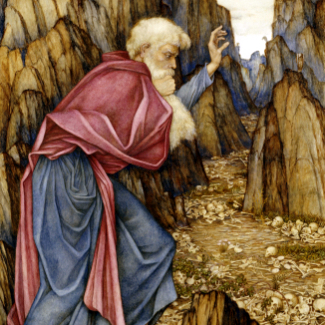Names of the Book
| English: | Ezekiel |
| Hebrew: | יחזקאל |
| Transliterated: | Yechezhk'el |
| Other names: |
 Who
Who
| Wrote the book: | Ezekiel |
| Are the key people: | Ezekiel, Ezekiel's wife, the kings and leaders of Israel, Nebuchadnezzar, "the prince" |
| Is it written to: | The people of Israel in captivity in Babylon. |
 What
What
| Messages of doom for Jerusalem and Judea (Ezekiel 1-24) |
| Messages of doom for seven foreign nations (Ezekiel 25-32) |
| Messages of hope for the people of Israel who honor him (Ezekiel 33-48) |
 When
When
| Was it written: | c 571 BCE |
| Did the events occur: | c 586 BCE - future |
| Was it canonized: | c 499-100 BCE |
| (see the Timeline of the Tanakh) | |
 Where
Where
| Was it written: | Babylon |
| Did the events occur: | Israel, Jerusalem, Babylon, and Egypt |
 Why
Why
| Ezekiel was written to inform us that: |
| G-d holiness cannot be compromised. |
| G-d judges sin. |
| G-d is able to restore those who have been judged. |
| G-d judges leaders with a greater and stricter measure. |
 Introduction
Introduction
The book of Ezekiel is historical narrative, prophecy, and apocalyptic vision. It begins with a dramatic depiction of Ezekiel's vision of the G-d and His entourage of angels. Ezekiel writes while in captivity in Babylon, "the land of the Chaldeans", to both the exiles and the people left in Judah. His message is both G-d's warning and judgment to prophesy the fall of Jerusalem in 586 BCE. After that judgment comes to pass, G-d gave Ezekiel a message of hope and comfort for the people of Judah. Ezekiel's vision of the valley of dry bones is a powerful depiction of G-d's ability to restore His people.
Scripture- Book Selection
